Comparing Performance
In the Introduction we bring you some of
the Z77-based motherboards we had tested, but we can't use data from the
previous review for comparison purposes due to the changes in our testbed
configuration. That's why we run all the benchmarks again, using an ASUS
P8Z77-V Premium as an opponent to the ASRock Z77 Extreme11. It is equipped with
a PLX PEX 8747 bridge, so that its performance and power consumption can
compare with the ASRock's mainboard. However, these two products are unique,
that is why we have also included MSI Z77 MPOWER mainboard, which will
represent the regular kind in this test session.
As usual, we intend to compare the mainboards
speeds in two different modes: in nominal mode and during CPU and memory
overclocking. The first mode is interesting because it shows how well the
mainboards work with their default settings. It is true that most users don't
tweak their system, just simply choose the optimal BIOS settings and do nothing
else. That's why we run a round of tests almost without interfering in any way
with the default mainboard settings. Although this time we have made some
changes. For example, we implemented the nominal CPU mode for all three
mainboards, and ensures that MSI had all power-saving technologies up and
running. The results in the graph are arranged in descending order.
Nominal mode
We used Cinebench 11.5. All test runs five
times and the average result of the five runs was taken for the performance
charts.

Cinebench
11.5.
We have used Fritz Chess Benchmark utility
for a long time and it proved to be very illustrative. It generates repeated
results, the performance in it is scales perfectly depending on the number of
involved computational threads.
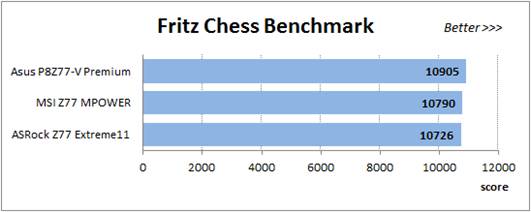
Fritz
Chess Benchmark
x264 FHD Benchmark v1.0.1 (64-bit) allows
us to compare the system performance against the results in the database. The
average results of the five test runs are shown in the following graph:
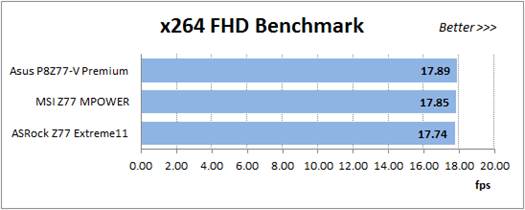
x264
FHD Benchmark v1.0.1 (64 bit)
We measure the performance of Adobe
Photoshop CS6 using our own benchmark made from Retouch Artists Photoshop Speed
Test that has been creatively modified. It includes typical editing of four
24-megapixel images from a digital photo camera.
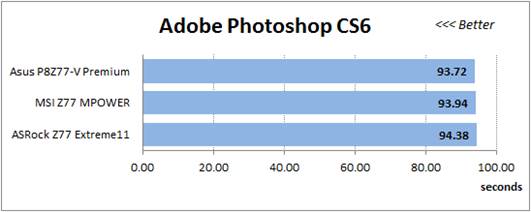
Adobe
Photoshop CS6
In the archiving test, a 1 GB file is
compressed by LZMA2 algorithm, while the other compression settings remain at
default.
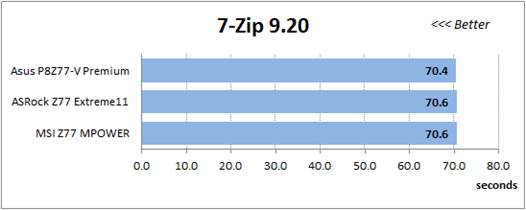
Archiving
test
As in the archiving test, the faster 16
million of Pi digits are calculated, the better. This is the only benchmark
where the number of processor cores doesn’t really matter because it creates
single-threaded loads.
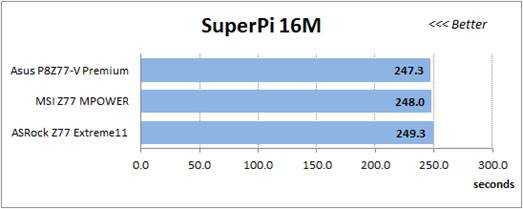
16
million of Pi digits
The next diagram shows only CPU tests from
the 3DMark11 suite - Physics Score. This score was observed in a particular
experiment simulating the physical behavior of a complex game system works with
multiple objects:

3DMark11
- Physics Score
The benchmark integrated into the Hitman
Absolution game turned out to be very convenient. It can be launched directly
from the game, from the game launcher utility and even from the command prompt.
To obtain the minimum acceptable results, we had to use the lowest image
settings and use one of the lower resolutions.

Hitman
Absolution
Batman: Arkham City game reacts strongly to
any change in CPU clock frequency, too, but it uses DirectX 11. We ran game’s
integrated benchmark five times with high image quality settings and then take
the average of the five runs for the diagrams.
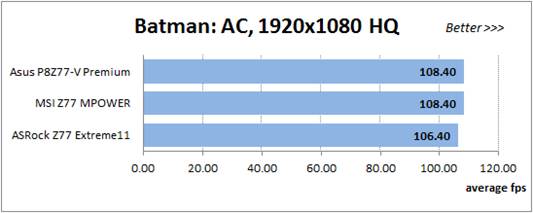
Batman:
Arkham City
We have pointed out many times in our
review that related mainboards working in identical testing conditions
demonstrate about the same performance. In general, the same is true this time.
Although we should point out that ASRock Z77 Extreme11 falls behind in Fritz
Chess Benchmark and games, and though this lag is insignificant, it is yet
somewhat higher than we had expected.
Overclocking mode
During overclocking ASRock made our CPU
stable at a clock rate of 4.6 GHz, while its rival stops at 4.5 GHz. Adding
this detail to the advantages of the mainboard, we benchmarked it at 4.5 GHz,
just as the others. Obviously that ASRock will be faster at 4.6 GHz, so we are
curious to see what they can do under the same conditions.
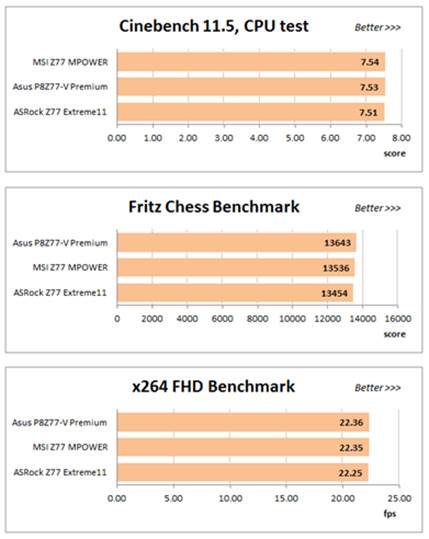
Our
CPU stable at a clock rate of 4.6 GHz
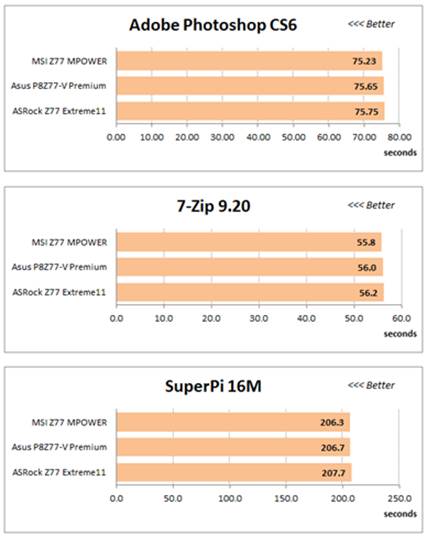
We
benchmarked it at 4.5 GHz, just as the others.
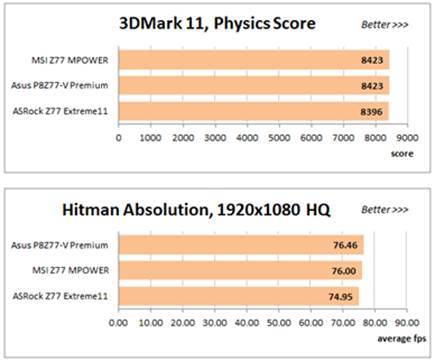
The
overall picture is not different when the mainboard is overclocked.
The overall picture is not different when
the mainboard is overclocked. They are similar in performance, ASRock falls
behind in similar applications: game and Fritz Chess Benchmark.